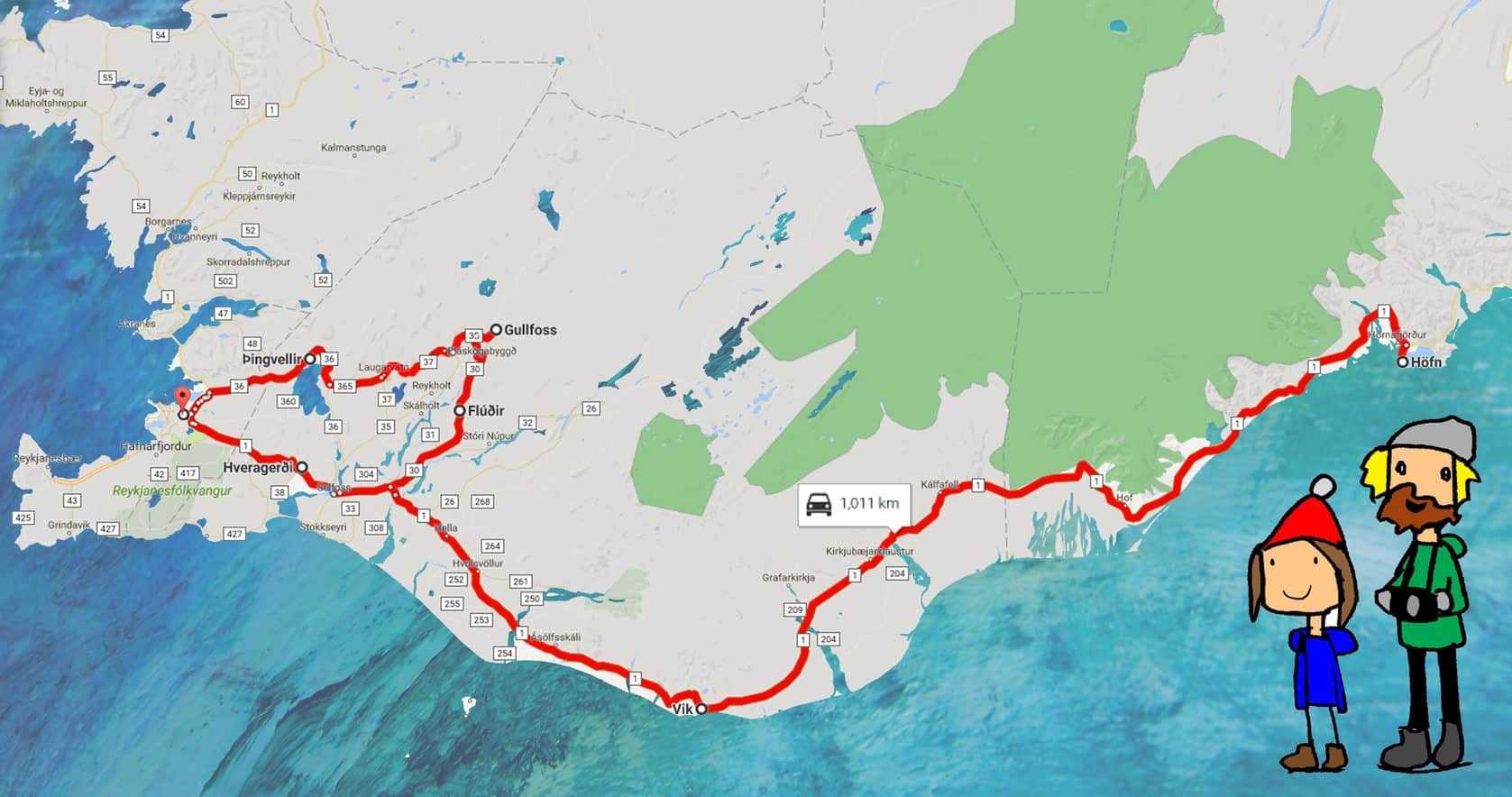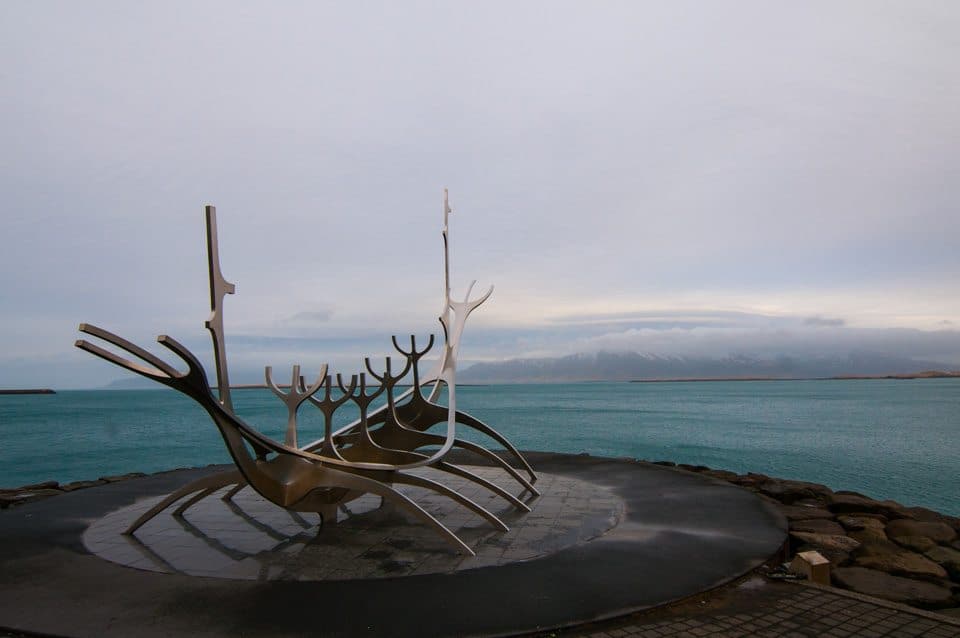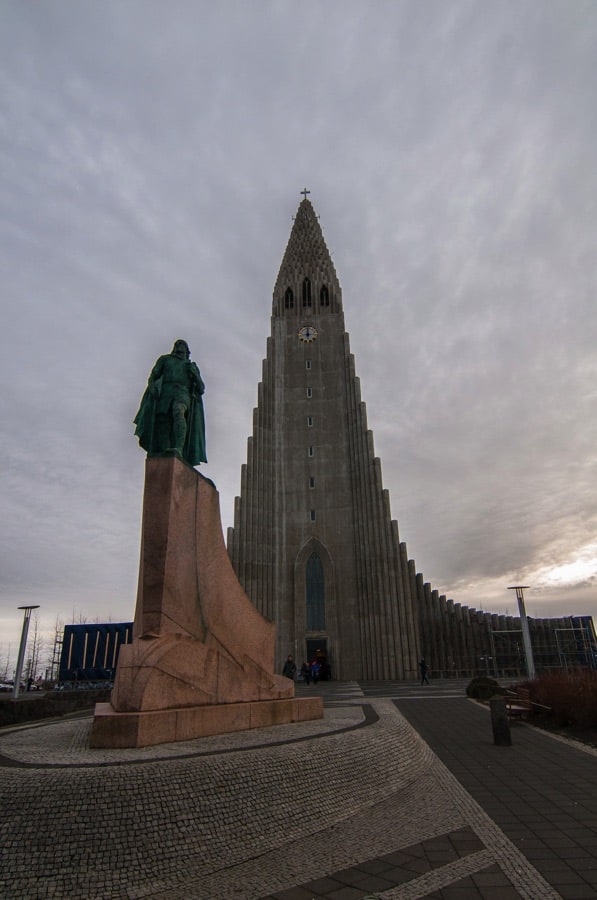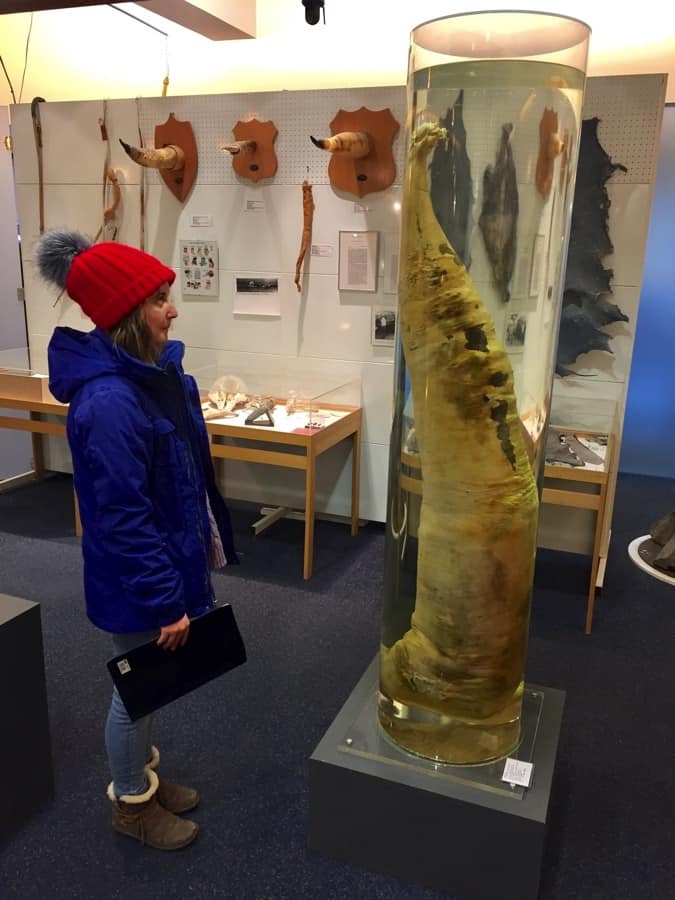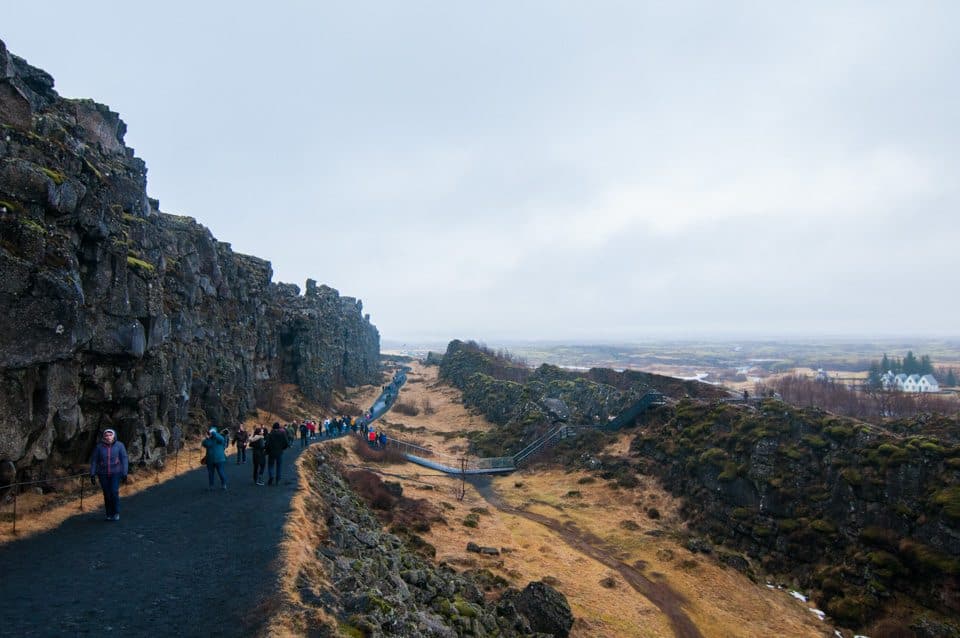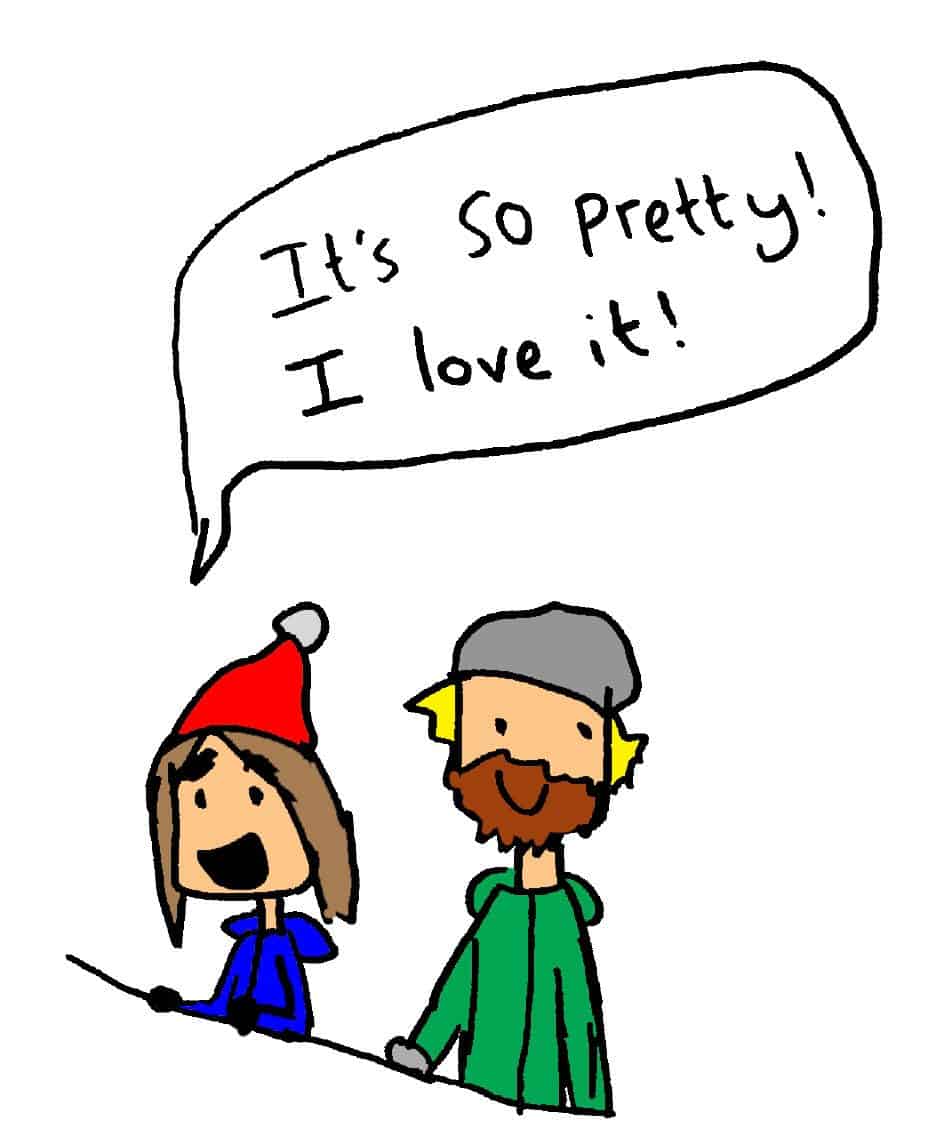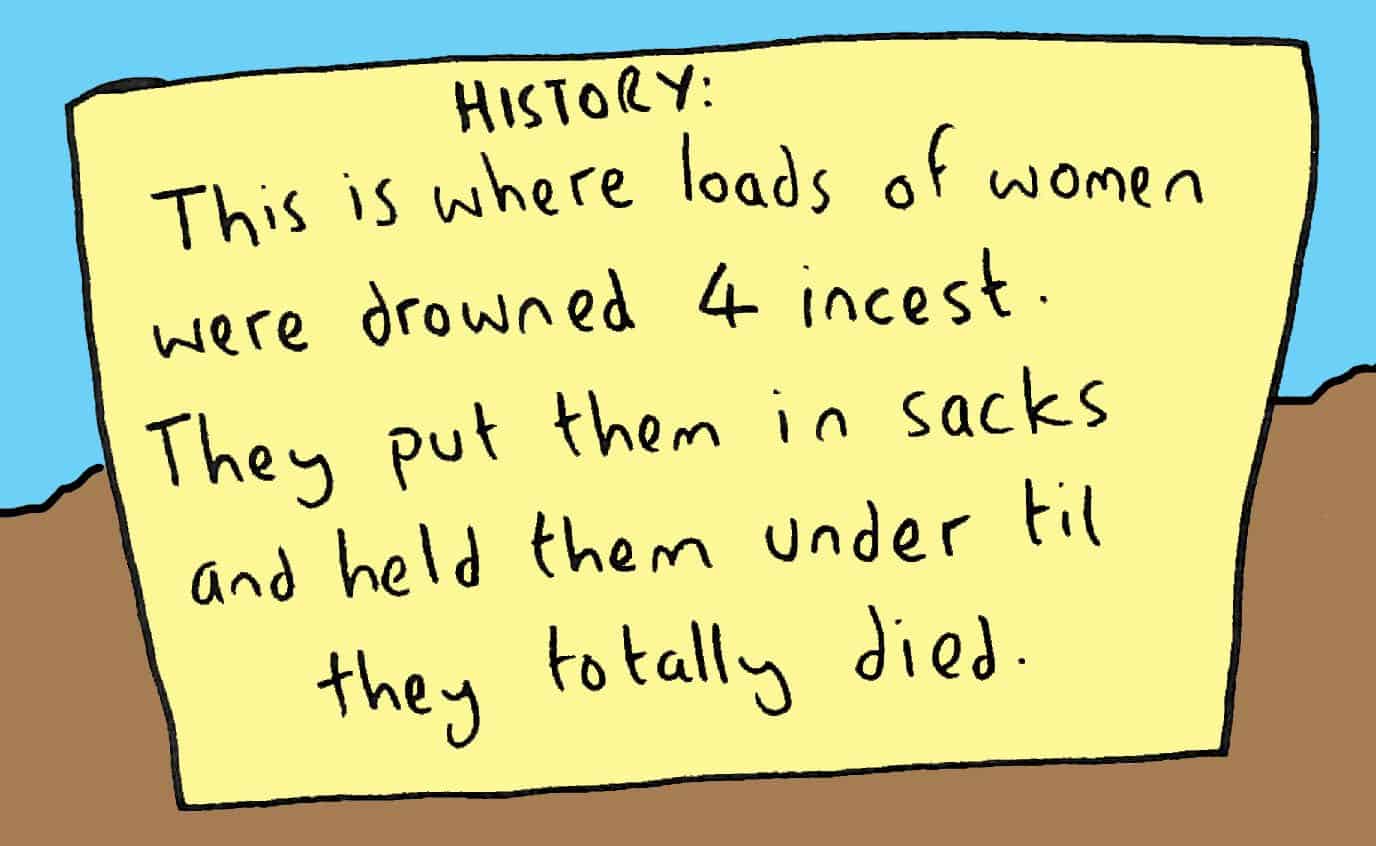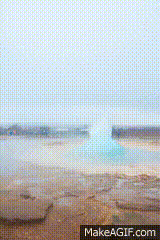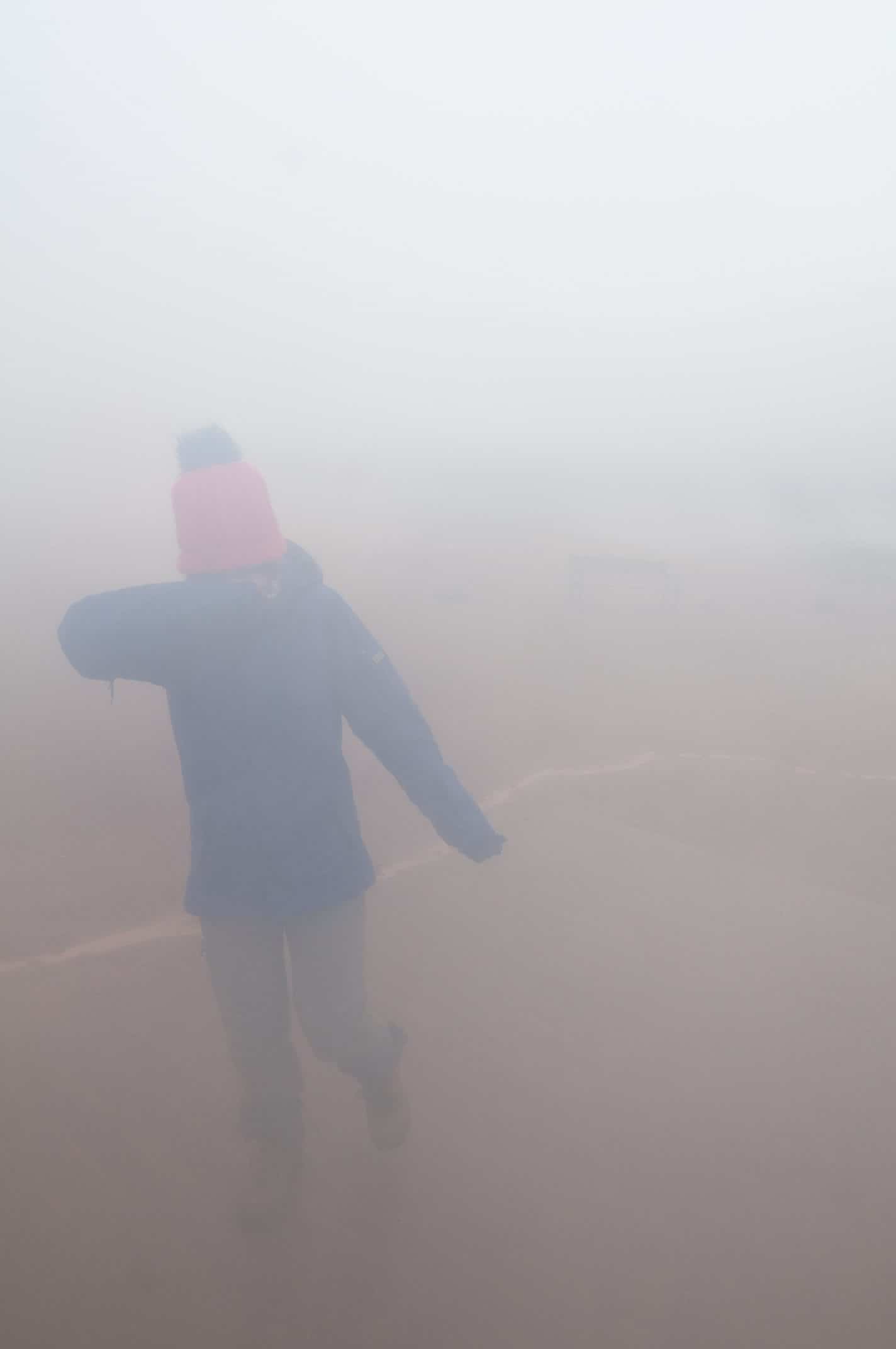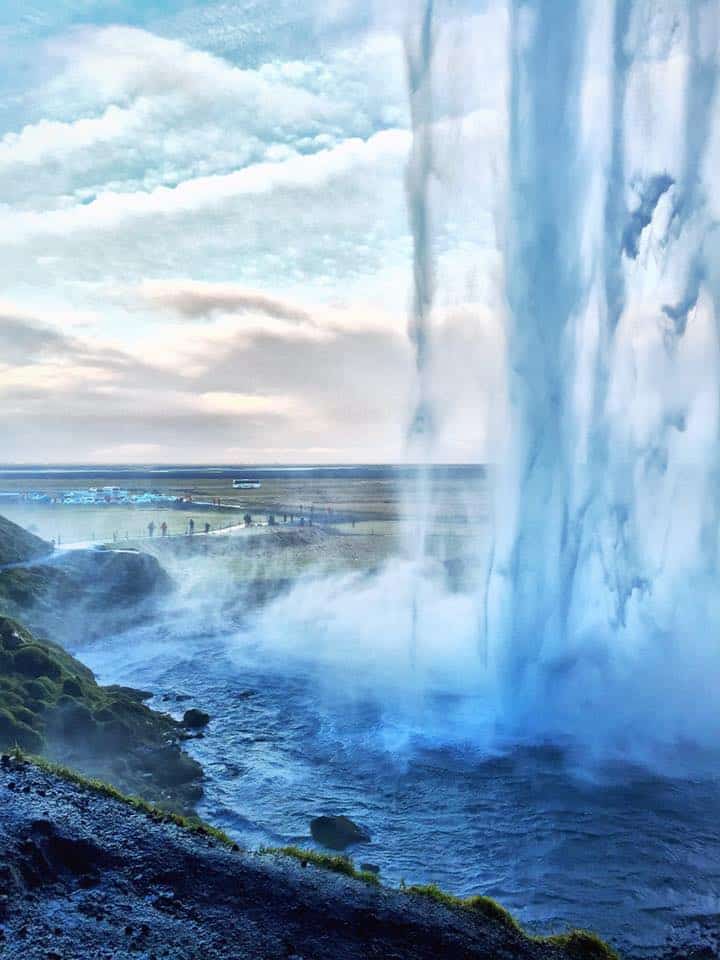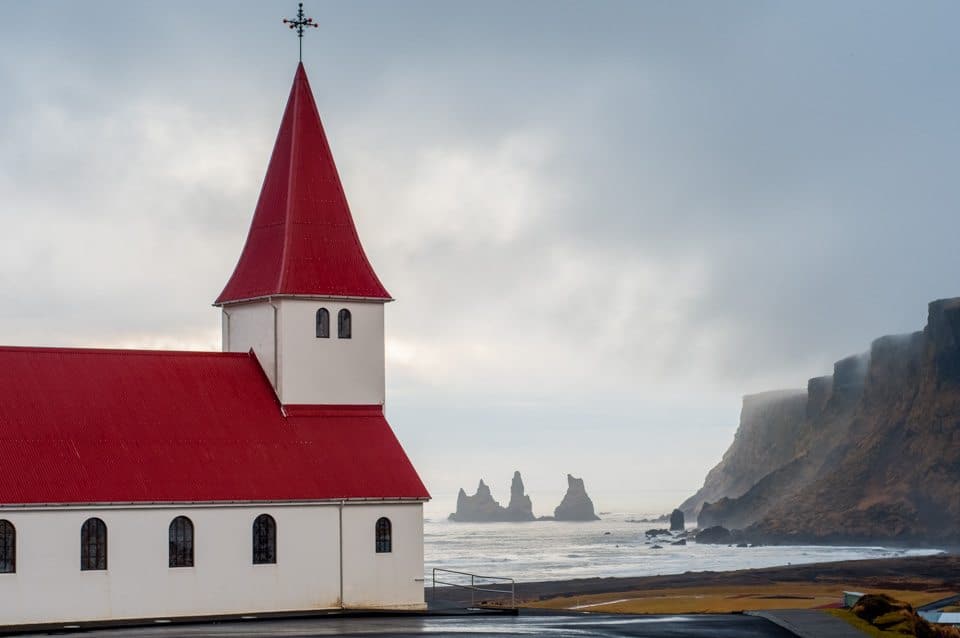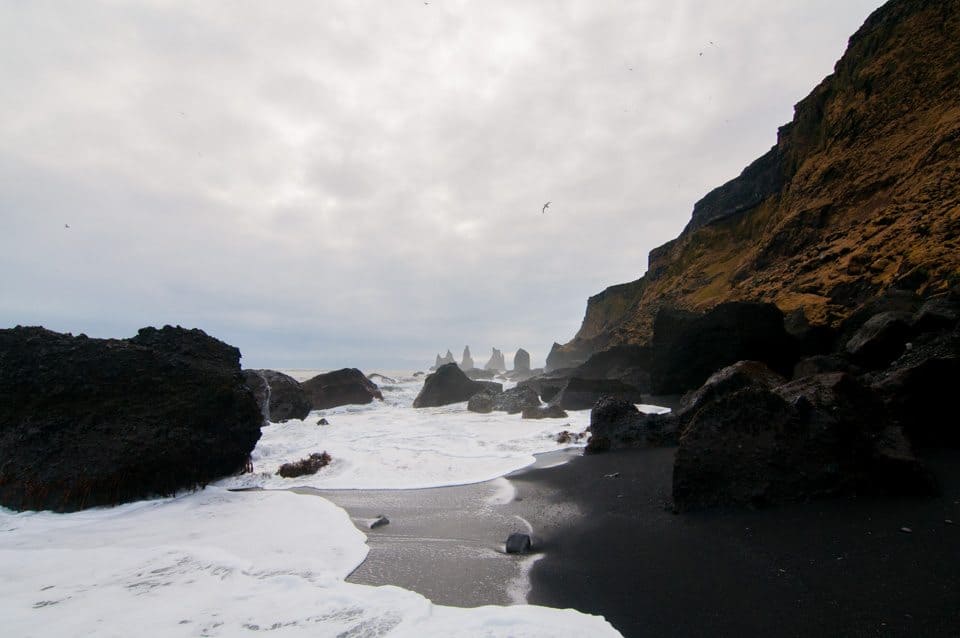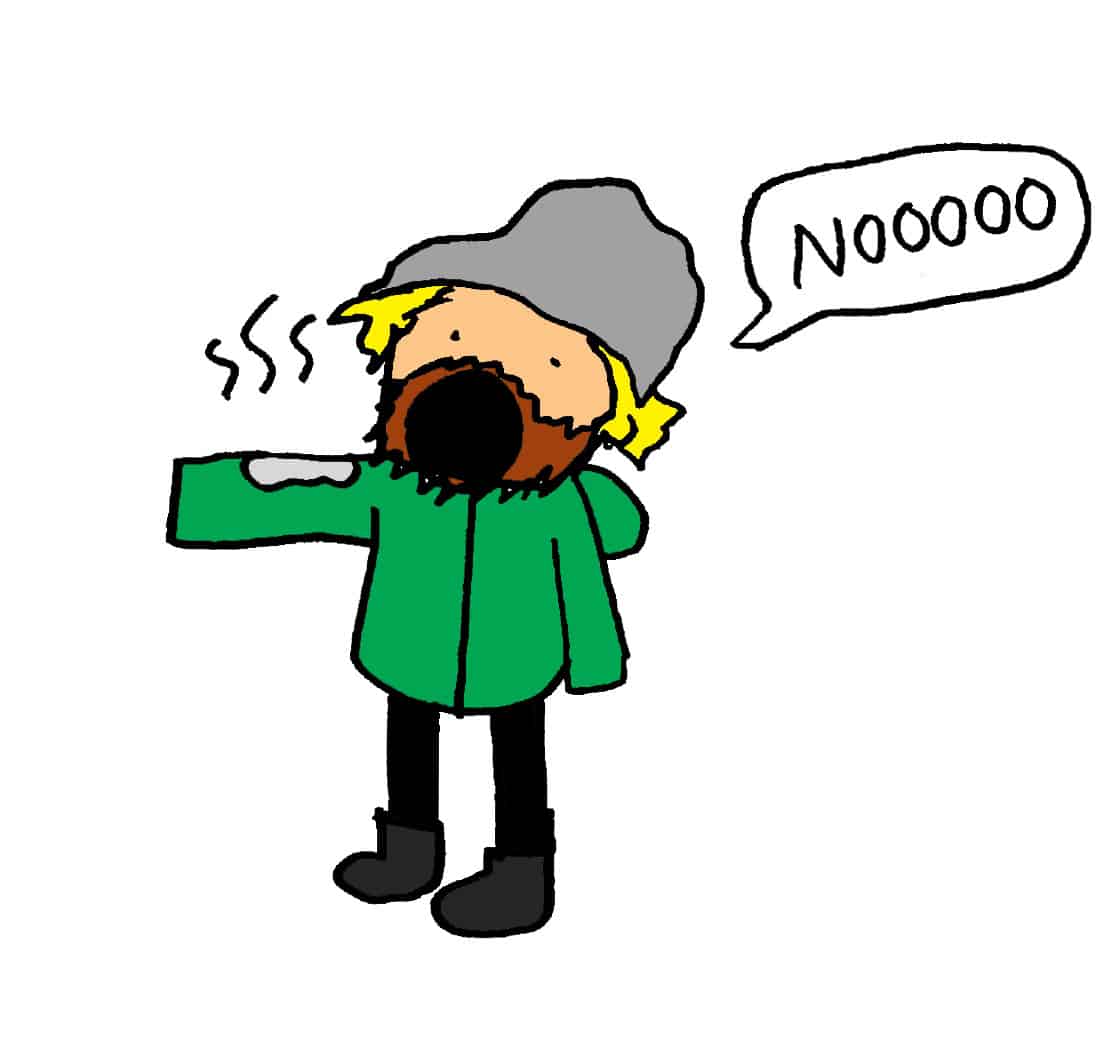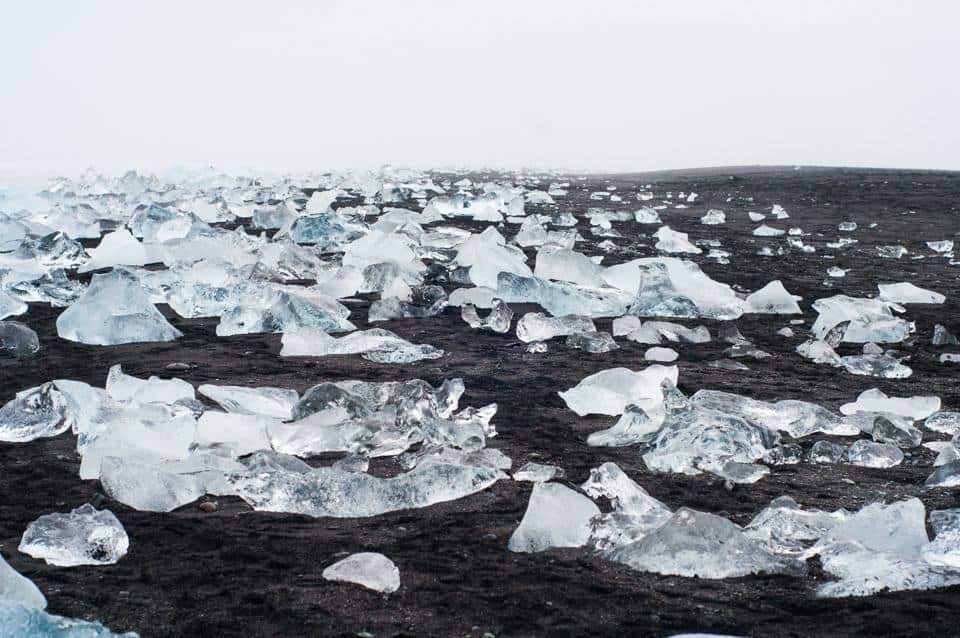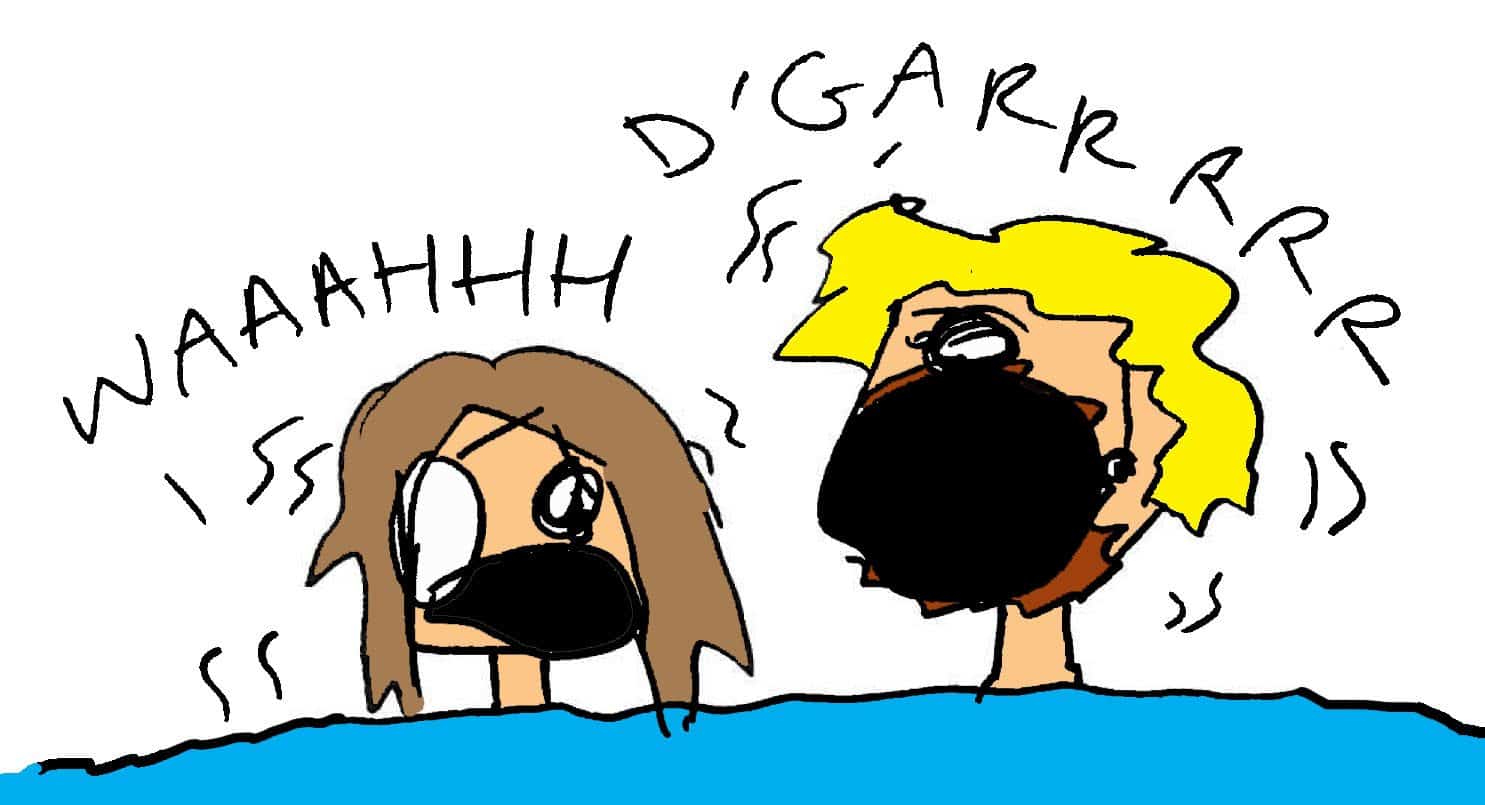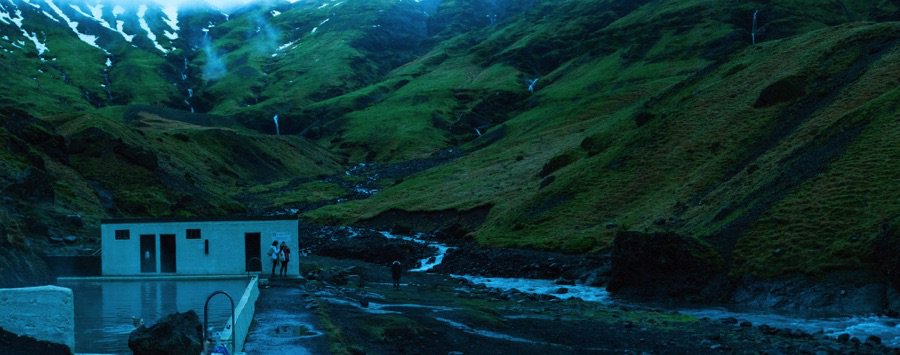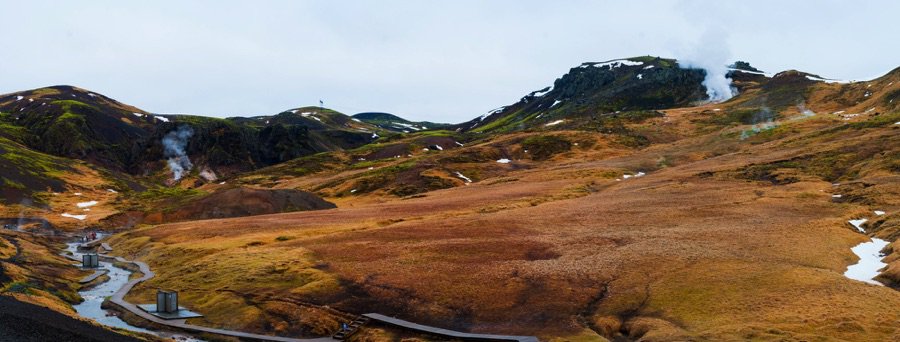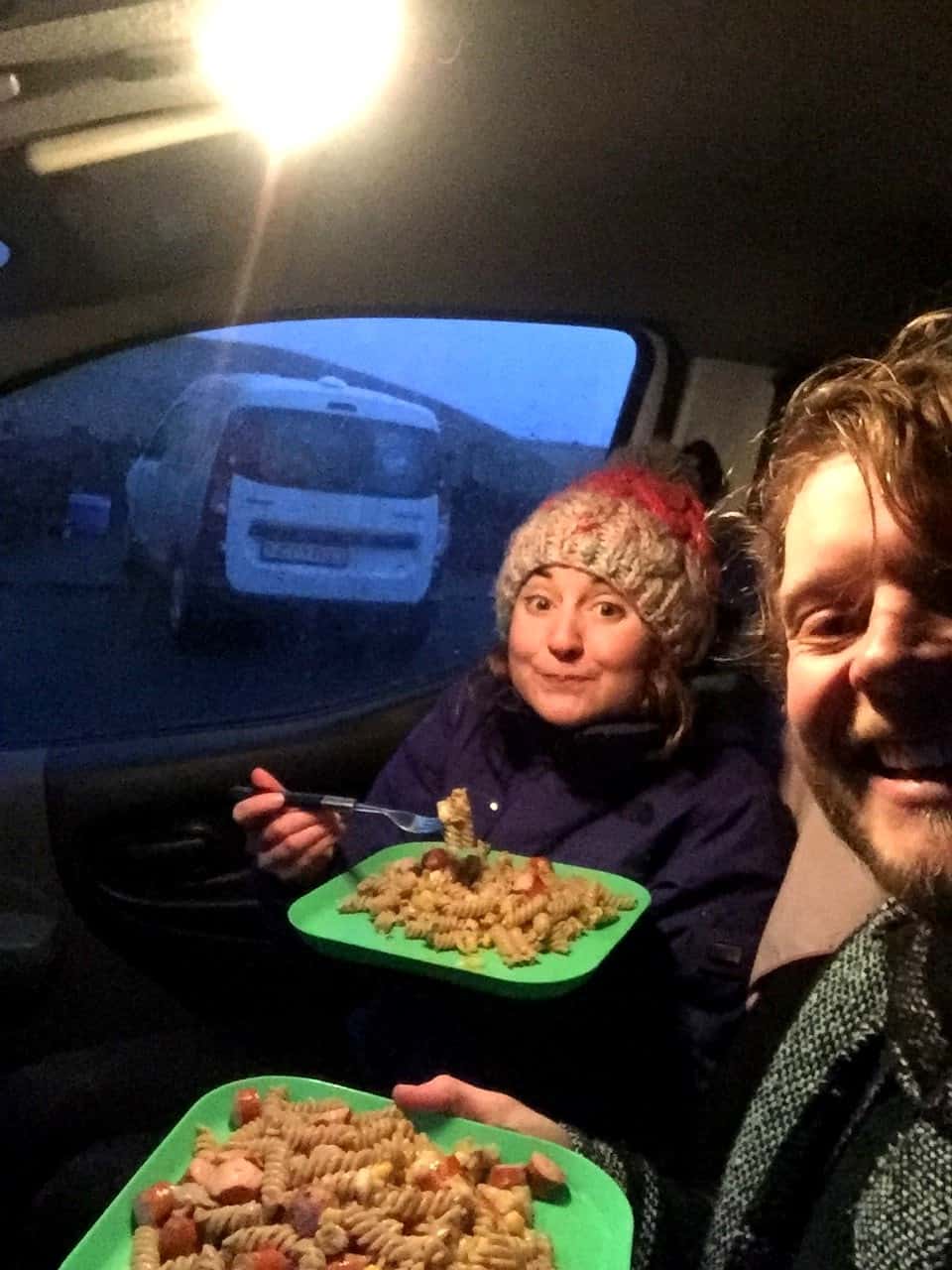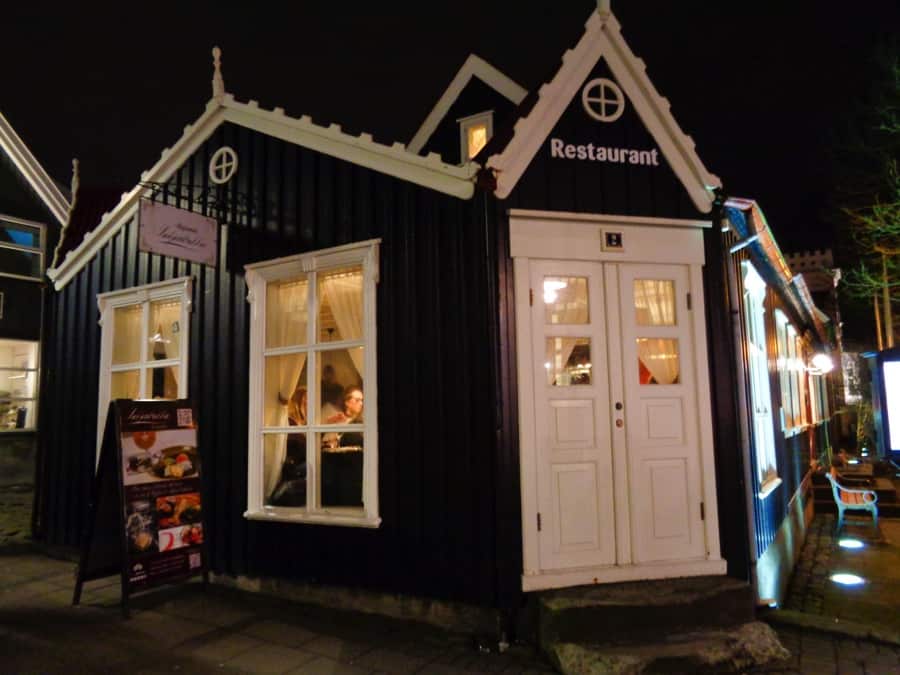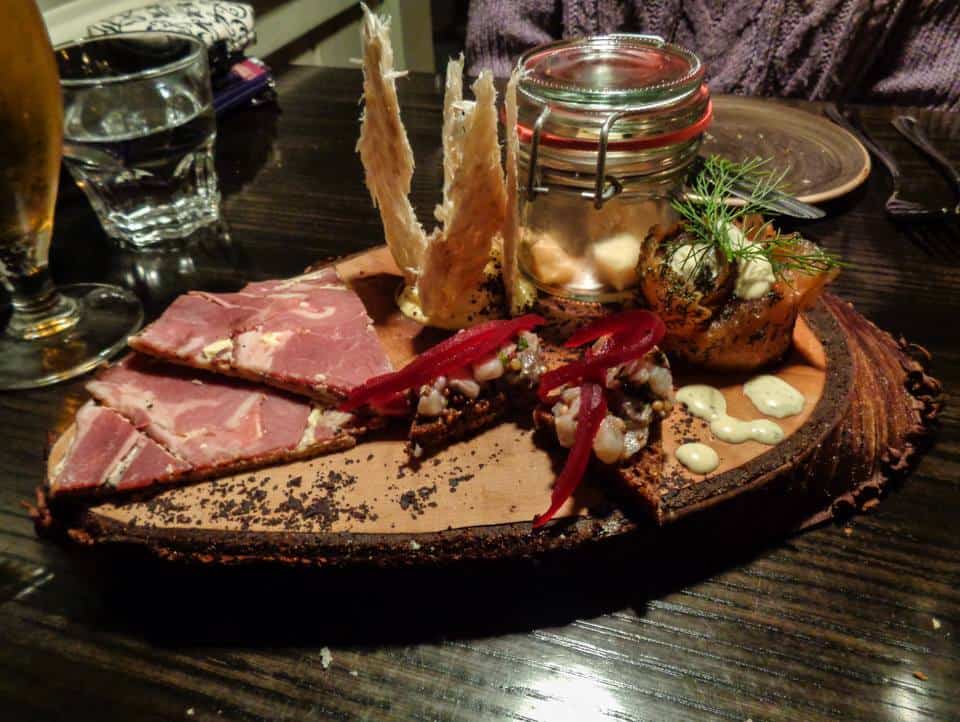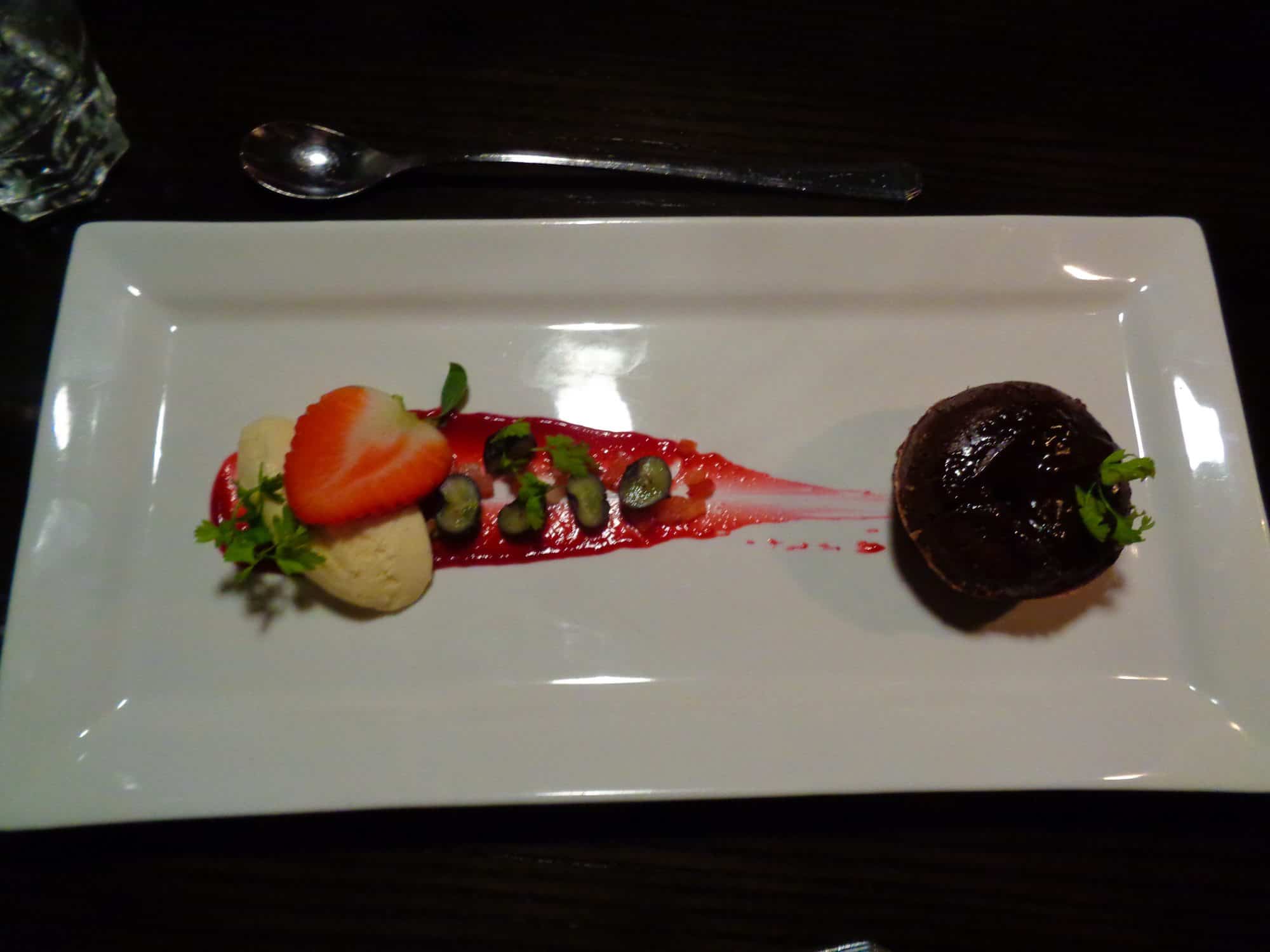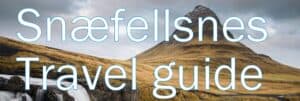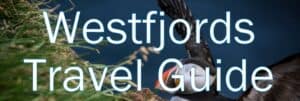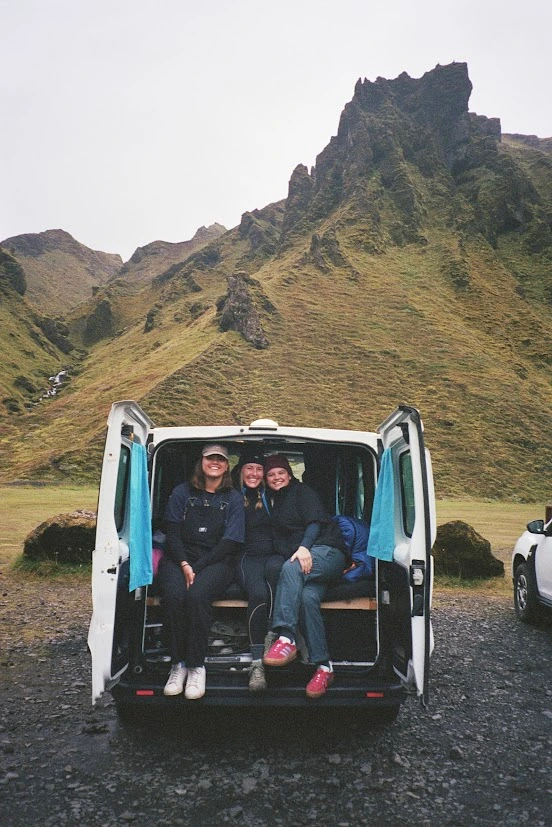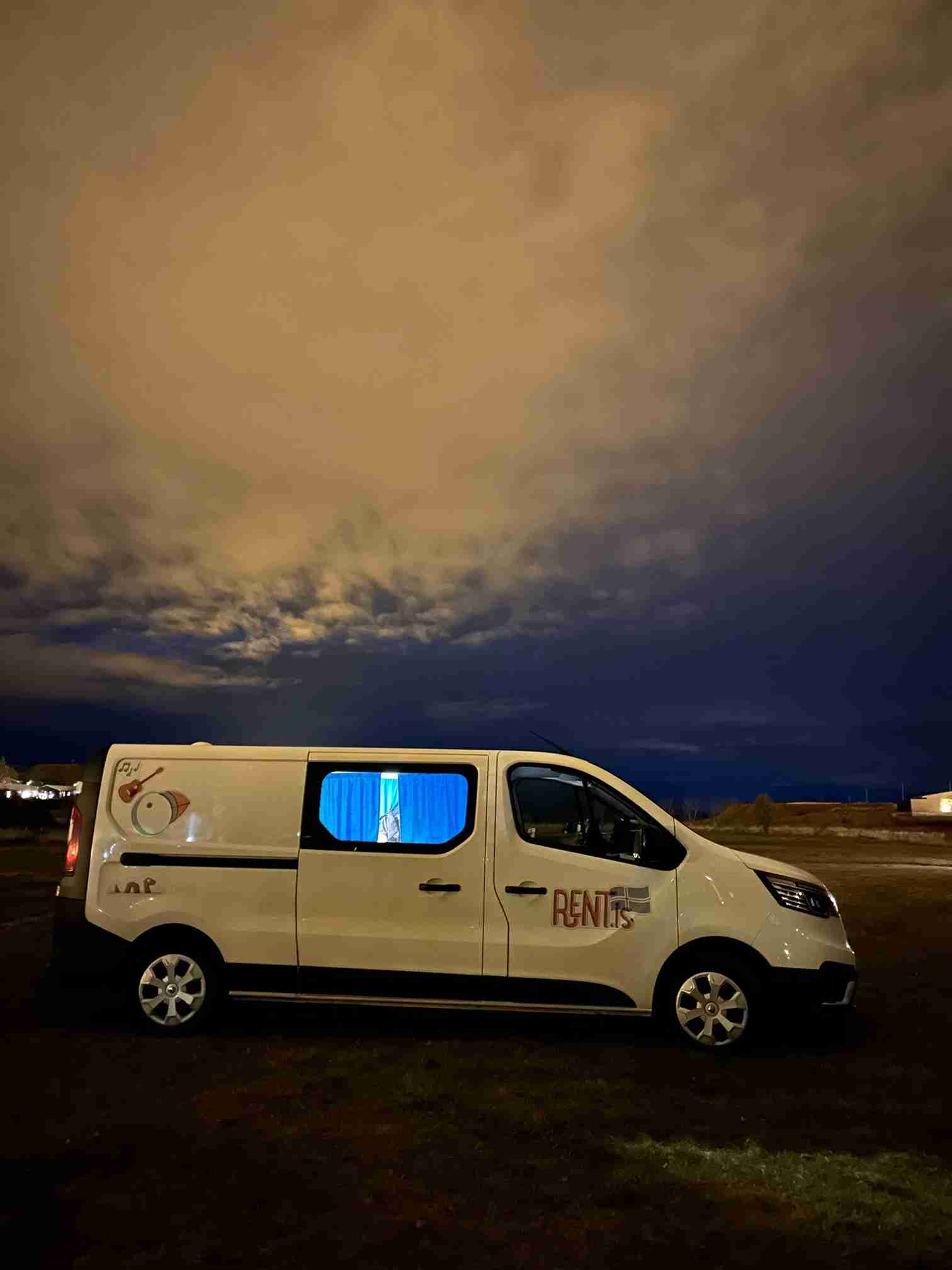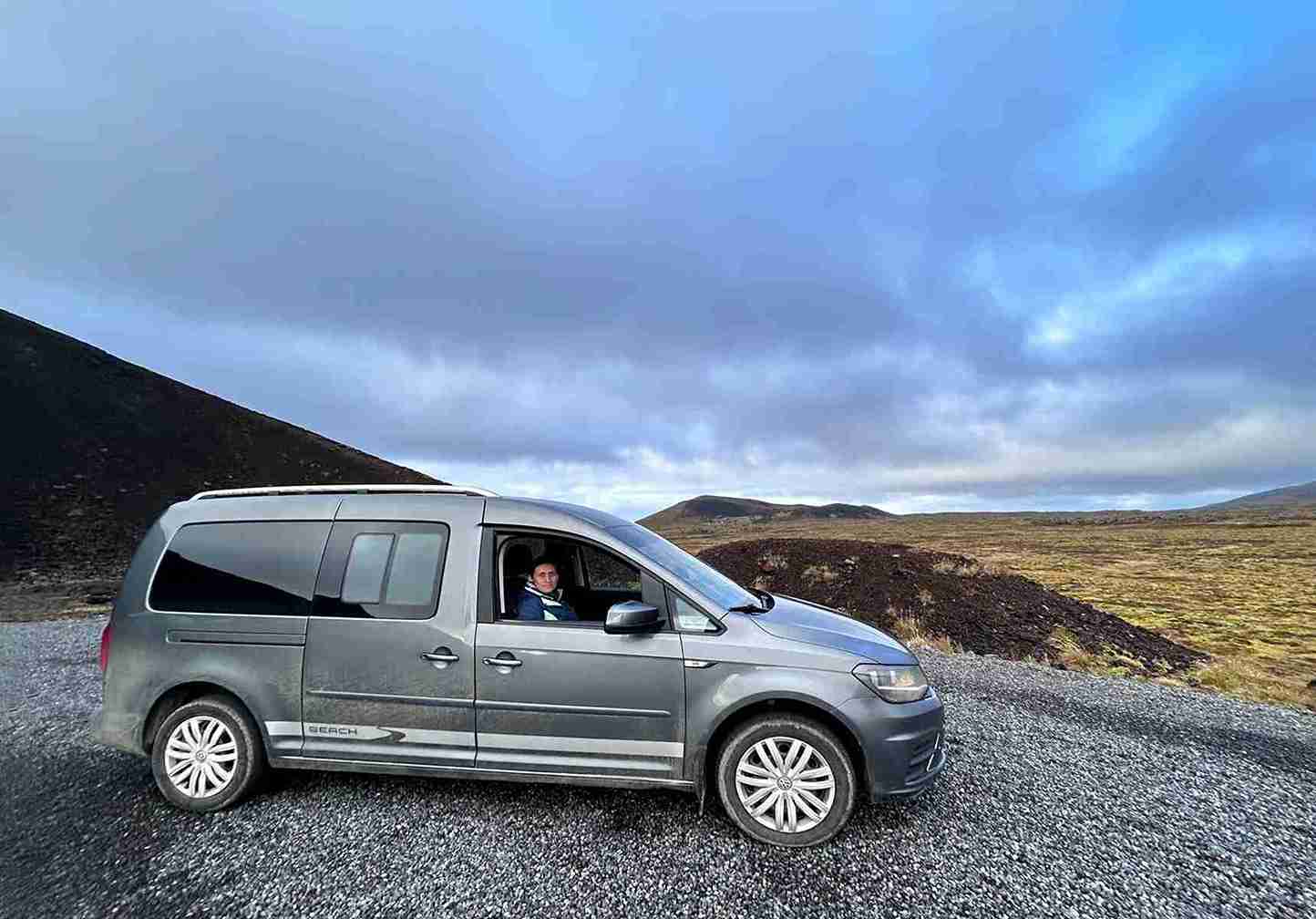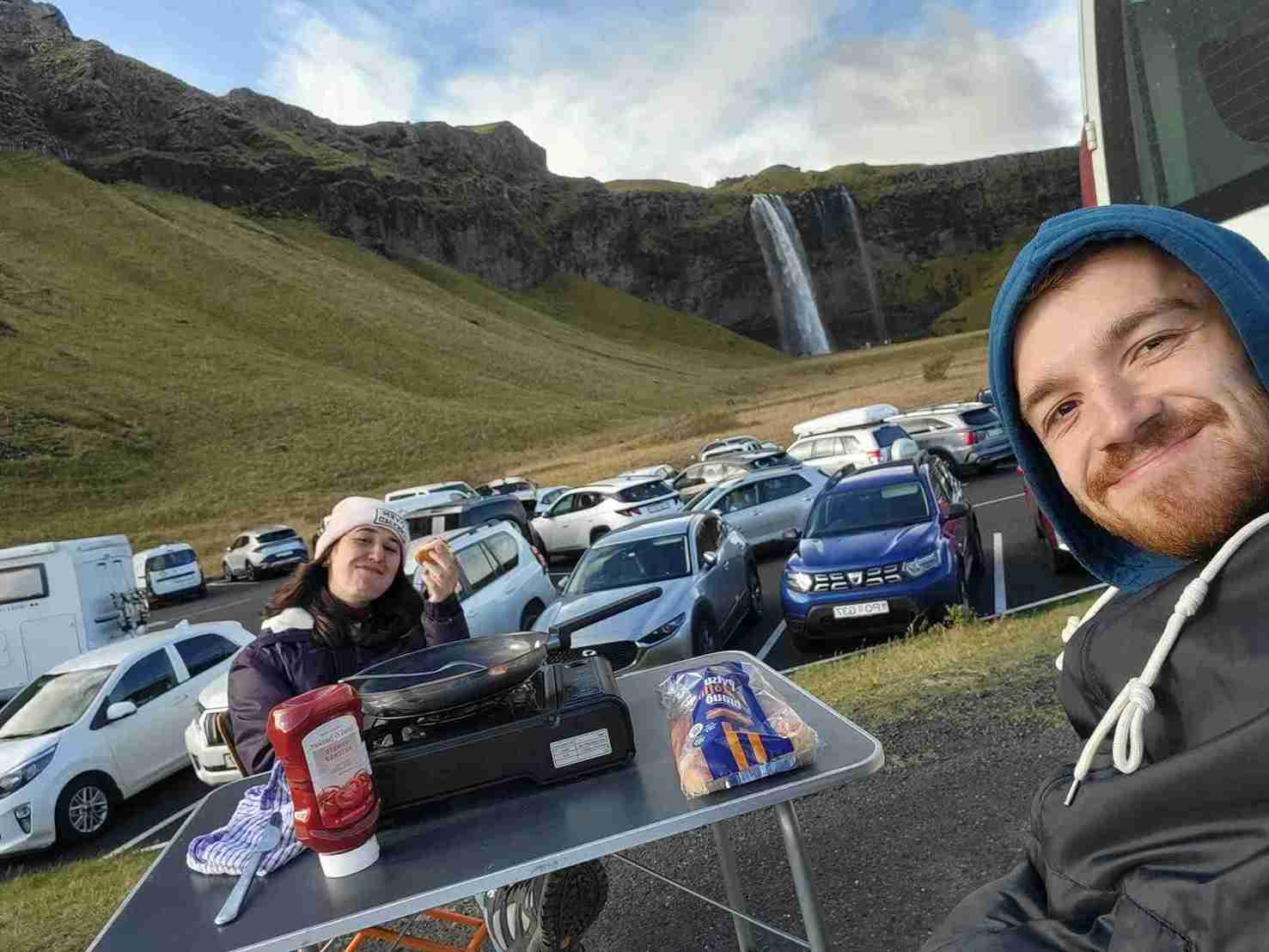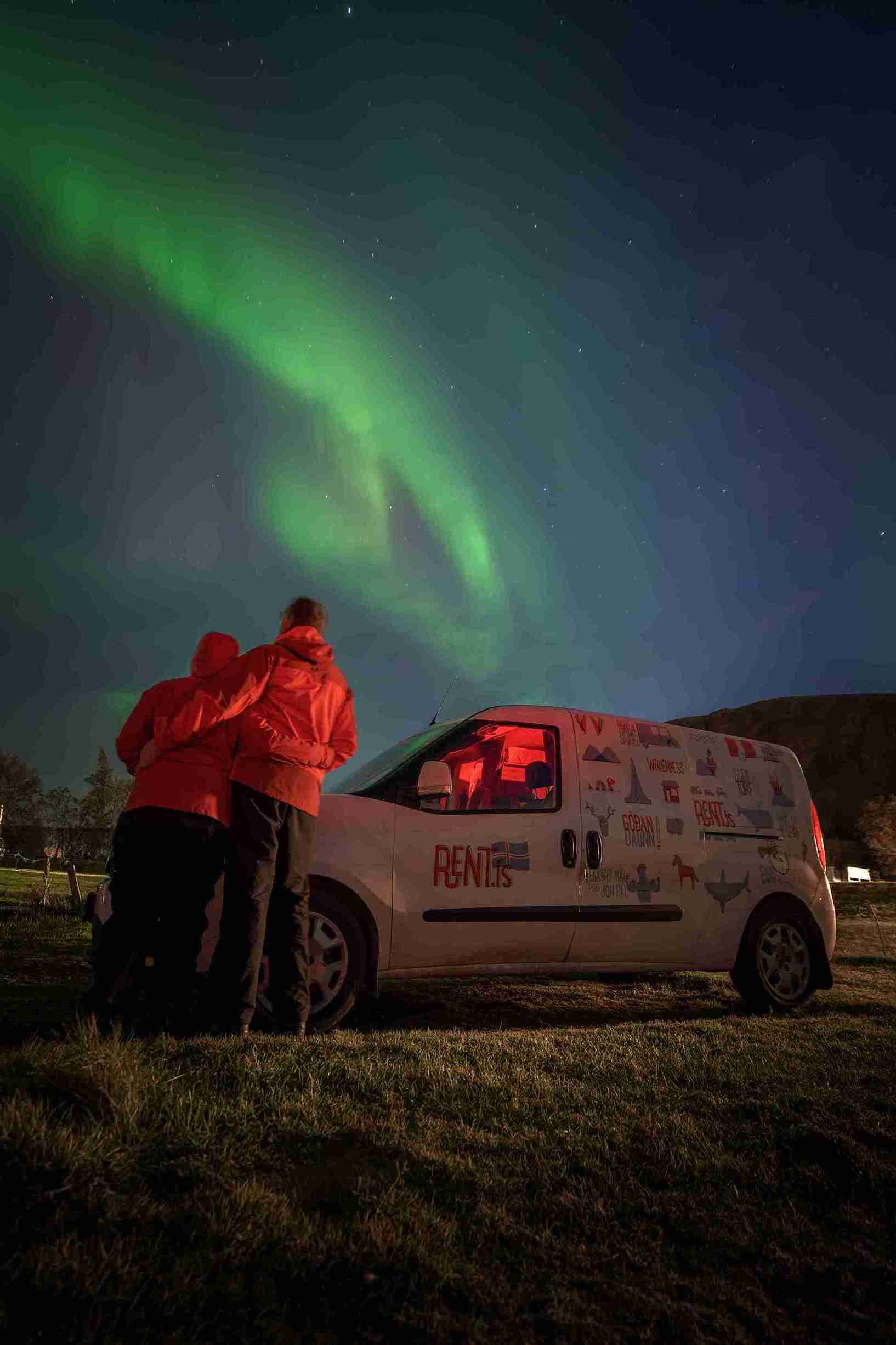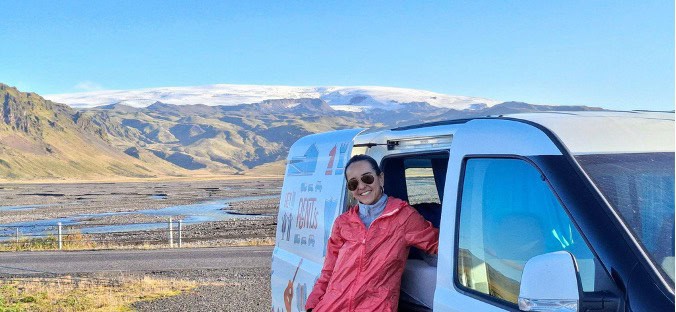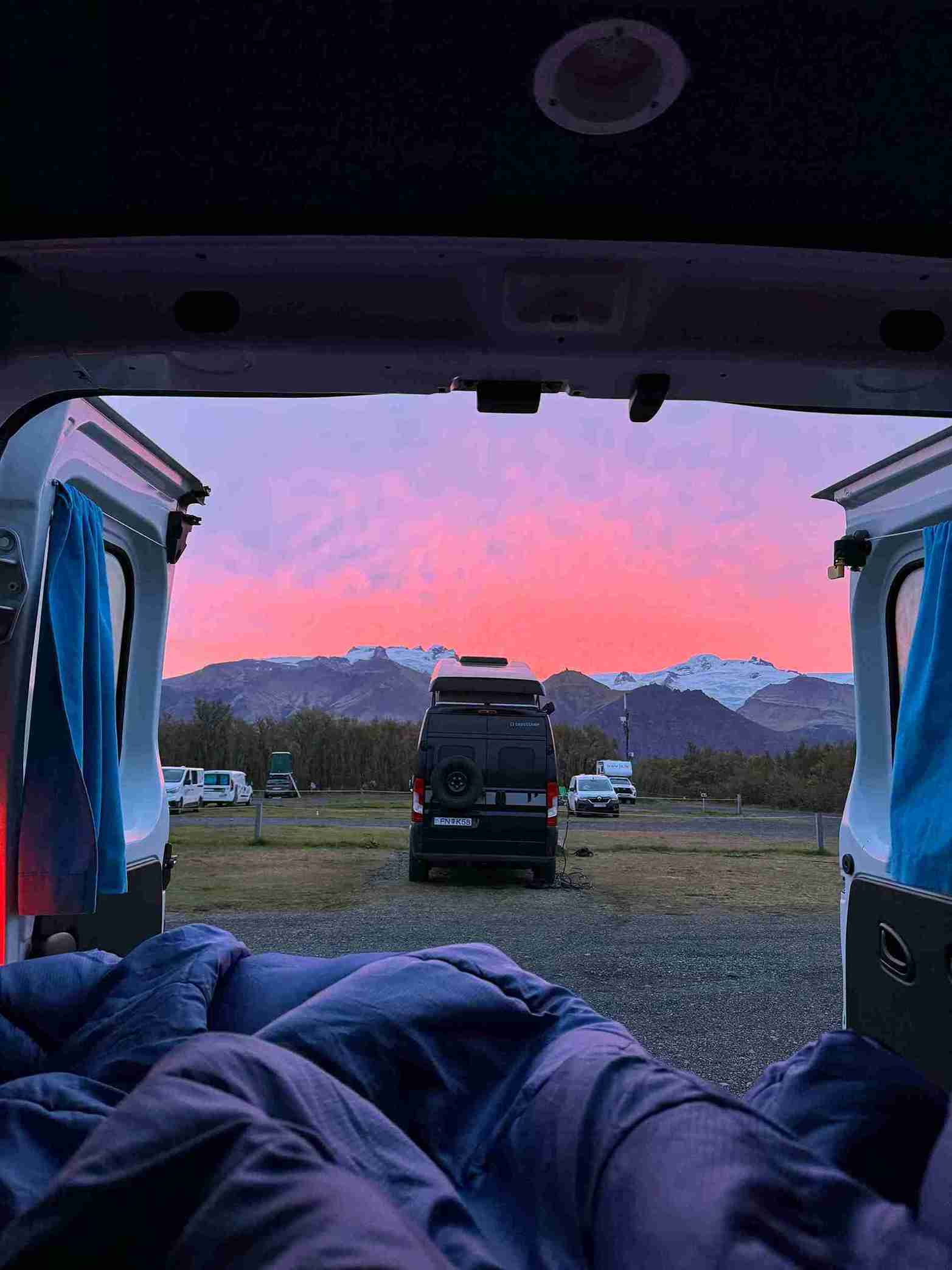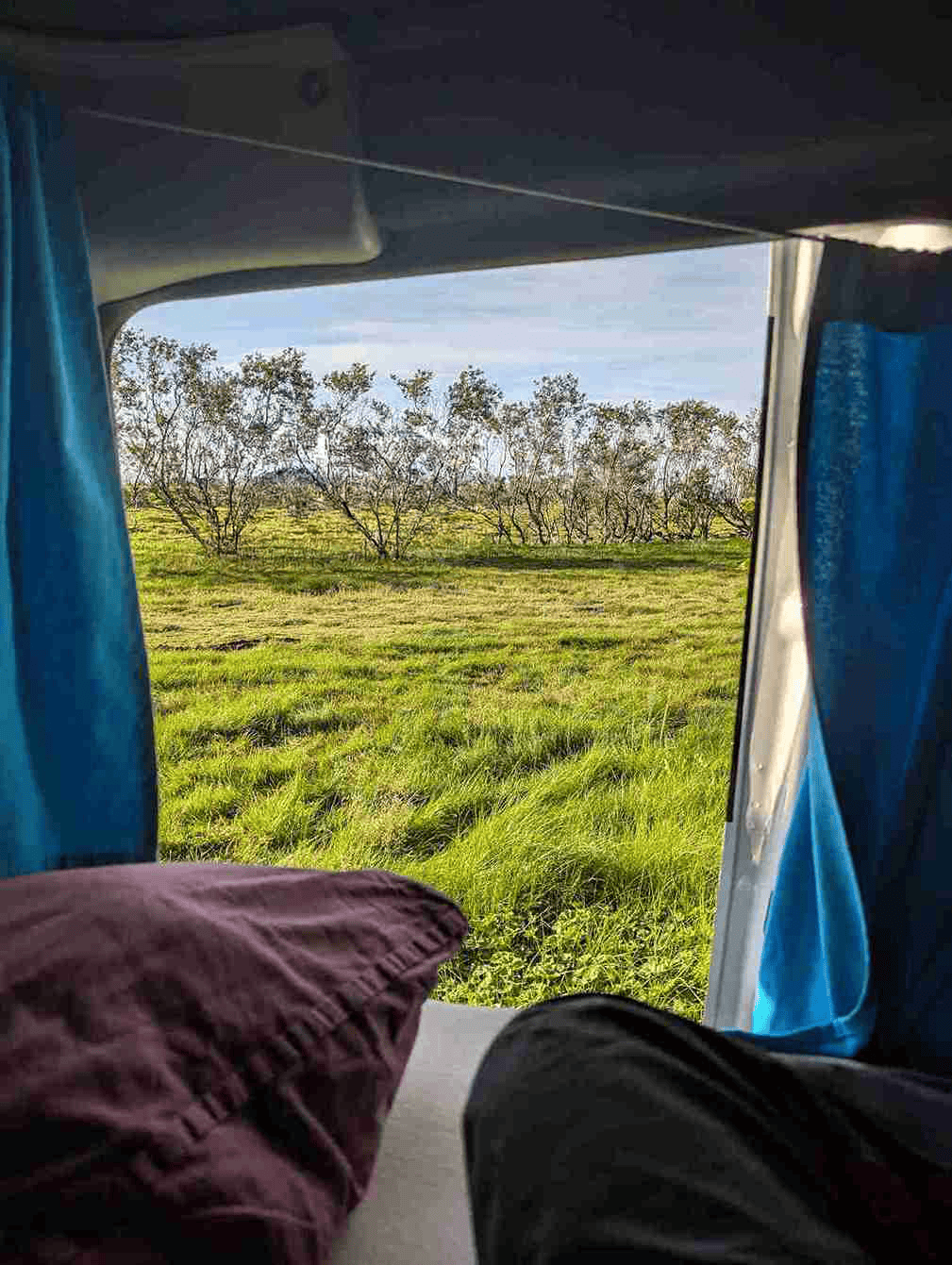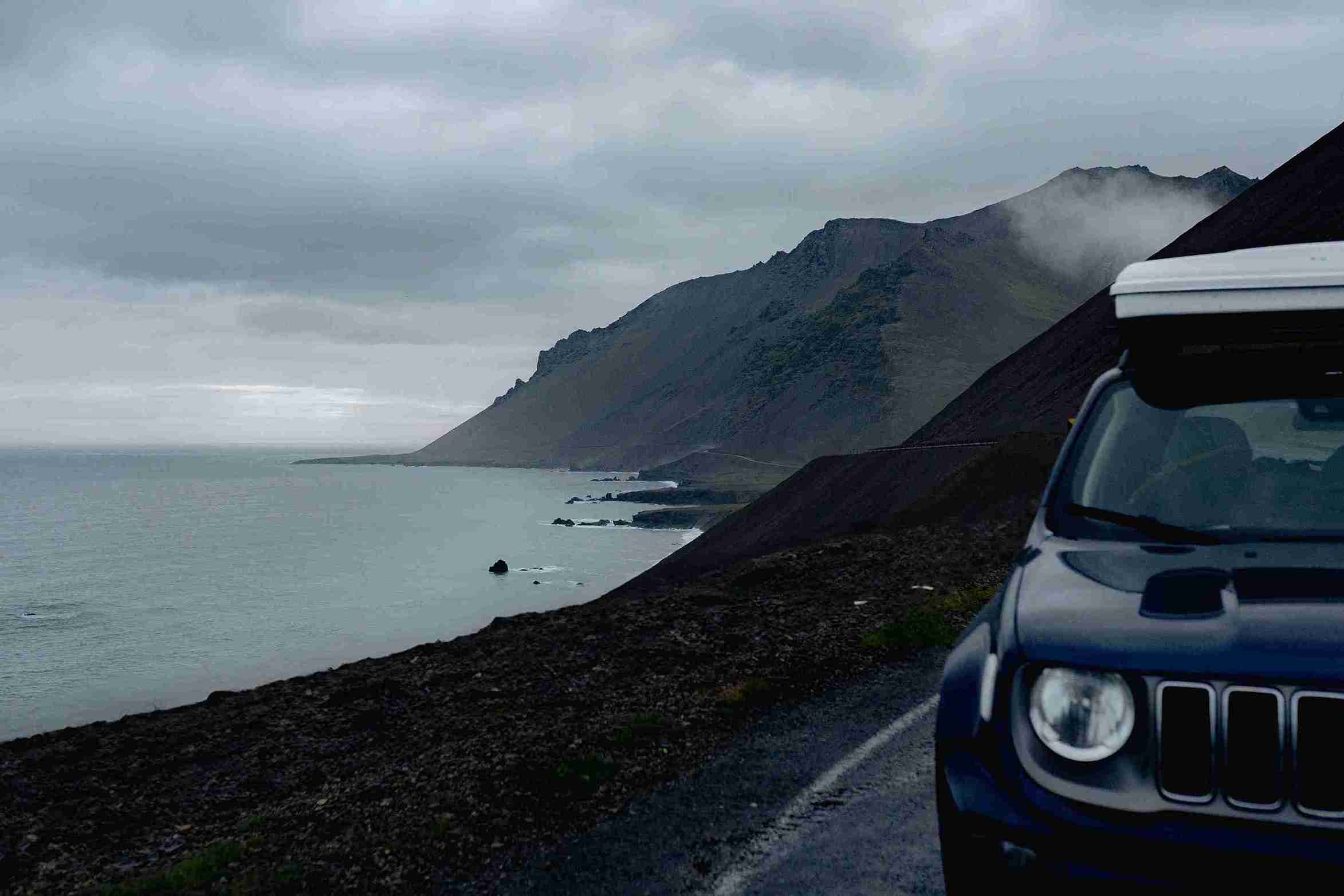Fire, frost and fart shark
When my boyfriend, Adam, suggested we go camper vanning around Iceland in February, I envisaged a horrific scene of the two of us violently shivering in the back of a
camper van, wrapped in multiple fleeces, with tears of despair freezing to our eyeballs.
I laughed in his face.
Ten minutes later, we’d booked our trip.
People thought we were a bit mad. I was inclined to agree with them. However, Iceland in February isn’t actually as cold as you might think. In fact, once January’s over, the temperature rarely dips below 0˚C.
That’s not to say we showed up in shorts and Ray Bans. We were prepared – with ski jackets, thermals, buffs, woolly hats and mittens. Thanks to these, we didn’t develop frostbite, like many people seemed to think we would.
In fact, we had an awesome time in our cozy little van (affectionately nicknamed ‘Loki’).
So whether you go in the heights of summer, or depths of winter, this blog – complete with crudely drawn cartoons – will hopefully inspire you to plan your own epic Iceland van trip.
Our route
With seven days to play with, we wanted to see as much as we could, without driving too far each day.
So with dreams of
black sand beaches, glacial lagoons and secret geothermal pools, we decided to travel across the South coast, as far as Höfn in the South East.
Reykjavik
We spent our first day exploring the capital city, checking out everything from the famous Sun Voyager monument, to quirky design shops, to Sundhöllin (the oldest public pool in Iceland).
That, and having minor heart attacks every time we saw a price tag. For those who are not aware, Iceland is very, very expensive. Upsettingly so, to the point we had to actively avoid many of the tours, souvenirs and attractions.
But hey, the best things in life are free. Such as visiting the 73m-high Hallgrimskirkja Church – a stunning piece of architecture jutting high above the city.
Inside, we sat in the pughs watching a spectacled man play the biggest organ I have ever seen.
Speaking of massive organs, the National Phallological Museum is one of Reykjavik’s highlights. It’s home to over 280 penises, of all shapes and sizes, from a 5ft sperm whale schlong to the hairy, shriveled member of a 90 year old man.
We learned some pretty fascinating peen facts. For instance, did you know humans are one of the only mammals without a penis bone? One evolutionary theory supposes this helps ladies discern the strongest partners, as men are likely to be more healthy if they can sustain an erection via blood flow.
That’ll make great tea time conversation next time I visit my nan.
Þingvellir
The popular
Golden Circle route gave us our first taste of Icelandic wilderness. We started in
Þingvellir national park – forged between the split tectonic plates of Europe and America. The well-marked directions and tourist information felt hugely at odds with its wild, chaotic Viking history and harsh landscape.
Among crowds of selfie-taking tourists with furry hoods, we gaped at the waterfall above Drekkingarhylur, admiring its dramatic natural beauty.
Until we read this sign.
Geysir
With new insight into the darker depths of Icelandic history, we moved on to Geysir. Here, we saw Stokkur, famous for dramatically jettisoning water up to 40m into the air, every 10 minutes.
This incredible natural spectacle seems too impressive to be real. A performance of its calibre isn’t usually delivered by any entity unless Hollywood has snapped them up, forced them to whiten their teeth and paid them a zillion dollars. But Stokkur is putting on shows for free, to the delight of camera-ready spectators.
One downside. It smelled of an anus.
Seljalandsafoss
After a morning of driving through amazing scenery, enriched by dramatic mountains and wild horses, we arrived at
Seljalandsfoss waterfall to witness another of Iceland’s epic natural displays.
This 60m, raging cascade of water has a rocky path running directly behind it. This means you can take a merry jaunt behind the waterfall and, although you get drenched by its spray, it’s 100% awesome. Just remember to bring your waterproofs.
Vík
Iceland’s southernmost, rainiest area. True to its reputation, Vik’s clouds opened as we gazed out from its spectacular viewpoint.
Shortly after a picnic lunch in our van, the rain conveniently eased off, so we ventured onto the black sand beach.
The amazing monochrome landscape made us feel like we were in a 1920s film, but with giant ravens flapping around instead of Charlie Chaplin. There were also thousands of seagulls swarming in the towering cliffs above us. One of them decided Adam was a toilet, which is always great when you’re living in a van, with no access to washing facilities.
We spent hours exploring, climbing rocks and reveling in another completely novel landscape.
When the rain returned, we headed to Vik’s local pool for a shower and evening swim. Even in this tiny fishing village, the pool facilities were top notch – complete with a large, heated
outdoor pool, 42˚ hot baths and a sauna.
That evening we parked in Vik’s empty campsite. It was closed for winter, so there were no facilities, but campers could still park for the night.
Jökulsárlón glacial lagoon
We set off from Vik early in the morning, before heading further east. On the way to Jökulsárlón, we saw incredible expanses of flat lava fields, covered in volcanic sand. But before the scenery had the chance to feel monotonous and barren, towering mountain ranges, blankets of moss, massive glaciers or herds of leaping reindeer would emerge from the mist.
Jökulsárlón – covered in ectoplasmic boulders, glowing at the tide’s edge – was the icing on the cake. Seals heads popped up from the water every now and again, performing sleek manoeuvres around their icy metropolis.
Unfortunately, there were mega-trucks of selfie-taking tourists all over the place, but the sight was nonetheless incredible.
Höfn
We spent so long admiring Jökulsárlón, the light was beginning to fade by the time we reached Höfn. So we headed straight to the local pool.
Although we’d already been spoilt by a range of awesome spa-like swimming baths along our way, Höfn took it up a notch with three water slides, two hot baths, a steam room and a heated outdoor swimming pool.
We lay back in the 42˚ bath, relaxing in the waning daylight. One man we were sharing the pool with, who we can only assume was a hardcore Icelandic regular, stood up after a long time in the hot water and slowly plodded over to the ice bath. We watched in awe as he submerged his entire body, without flinching, and lay there for at least a minute.
Our efforts were less heroic.
Fjallsárlón glacial lagoon
We pulled off the main road to see the surreal magic of Fjallsárlón, on our way back west from Hofn.
Here, instead of selfie-stick-wielding busloads of tourists, there was nothing more than a trio of Danish photographers huddled up to their tripods.
It was quiet enough to hear the hollow knocking and cracking of the ice in the distance, slowly shifting down the valley.
At one point, Adam saw a large block of ice plunge into the water in the faraway distance. The sound travelled over slowly, its thunderous impact resonating from nearly two kilometers away.
With another delay, the edge of the water swelled, rippling towards us in a tiny wave.
Wild swimming in Iceland
Seljavallalaug
This elusive geothermal pool is tucked away in the snow-capped foothills of Eyjafjallajökull.
The walk in was a natural obstacle course, which felt like a test of our resolve to find it. We had to cross a river, using submerged rocks as makeshift stepping stones.
We eventually arrived to find the pool next to a tiny, stone-walled changing hut. It wasn’t immediately clear which section was the men’s or ladies’ area, but this was confirmed by a glimpse of several naked men’s pale asses in the shadows.
I averted my gaze and scampered over to the other side, where an alarmingly busty woman had everything on show. It turned out she had no intention of covering up, as she confidently strode into the cold to enjoy a relaxing evening skinny dip.
The water was a little cooler than in other hot baths we’d experienced, but still warm enough to enjoy a long soak, particularly when we found a warm corner where a natural hot stream filtered into the pool.
We walked back to Loki just as the light was beginning to fade, occasionally looking up from the uneven terrain to admire the gloomy mountains, poking through a fine mist of rain.
Reykjadalur hot river
The trail to the hot river led us on a twisty 3km hike through the Reykjadalur valley, with plumes of steam rising from an otherwise wintery landscape.
The terrain was steep and challenging, much more so than we’d expected, but the payoff was definitely worth it. This thermal river is yet another of Iceland’s epic natural gems, with difficult access to protect it from large packs of tourists.
The river gets warmer the further up you go, giving you the choice of where to bathe depending on your preferred temperature. Like much of Iceland’s impressive bounty, it seems too good to be natural – surely nothing so convenient can exist without human intervention? But no, it’s just another example of Iceland being awesome again.
Food
Camping
Once we got a taste of how devastatingly expensive Iceland is, we headed to a supermarket to ensure the majority of our meals were fired up on our camping stove – instead of burning holes through our wallets.
Although the supermarkets still weren’t cheap, they were a lot more pocket-friendly than eating out. In fact, a food shop for the two of us, for the whole seven days, cost us the same amount as a main course each at a restaurant (roughly 8,000 ISK).
We managed to create some surprisingly tasty meals with our little camping stove (including carbonara, sardine and tomato pasta, and a Spanish omlette) using just cold meat, eggs, pasta, cheese, mixed herbs, a tin of sardines, a potato, tinned tomatoes, tomato purée, sweetcorn, a green pepper and butter.
Eating out
After seven days reveling in smelly van life, we decided to scrub up and celebrate our last night at the most romantic restaurant in Reykjavik – Lækjarbrekka.
The starry-eyed illusion, with warm candlelight upon our faces, faltered when our shared ‘Icelandic Taste’ starter arrived. This included lamb on rye (yum), wind dried fish (a bit weird, but okay), and… Hákarl.
Hákarl, or ‘Fart shark’, as I shall henceforth refer to it, is the strangest, most pungent thing I’ve ever eaten. It’s a Greenland shark that’s been left to ferment in the ground, to remove poisonous fluids from its meat. It’s then hung to dry for four to five months.
It was served in a sealed mason jar, to conceal its heinous smell from our fellow diners. Opening the lid just a crack, I immediately understood why. The stench of ammonia was so strong, it reminded me of the toilets at Reading festival.
I watched aghast as Adam wormed his fork into the jar. Upon tasting the first chunk, his face conveyed complete disdain.
With a quivering hand, I reluctantly brought my cube to my mouth. It was horrific.
I’m proud to report, I didn’t projectile vomit across the lovely restaurant’s cozy décor. In fact, I still trusted the place enough to enjoy my main meal – a traditional Icelandic fish stew, baked with cheese.
Adam covered the lingering taste of ammonia in his mouth with Arctic Char, before we shared a chocolate and berry dessert.
YUM!
Basically… Iceland is awesome
So despite the Fart Shark’s best efforts to sabotage our lovely dinner, we walked out onto the cold streets of Reykjavik that night hand in hand, beaming with happy memories of the evening, and our trip.
My envisaged scene of us freezing to death and weeping could not have been further from the truth. Our van had given us seven days of pure freedom.
Thank you, Iceland, for cramming so many unforgettable experiences into seven days.
Although I can’t say I’ll be hurrying to lobby Hákarl into my local supermarket’s ‘Foreign Foods’ section…
Happy Camping! #CamperStories
Iceland Travel Guides


If you like what you see, please subscribe to our YouTube channel!


